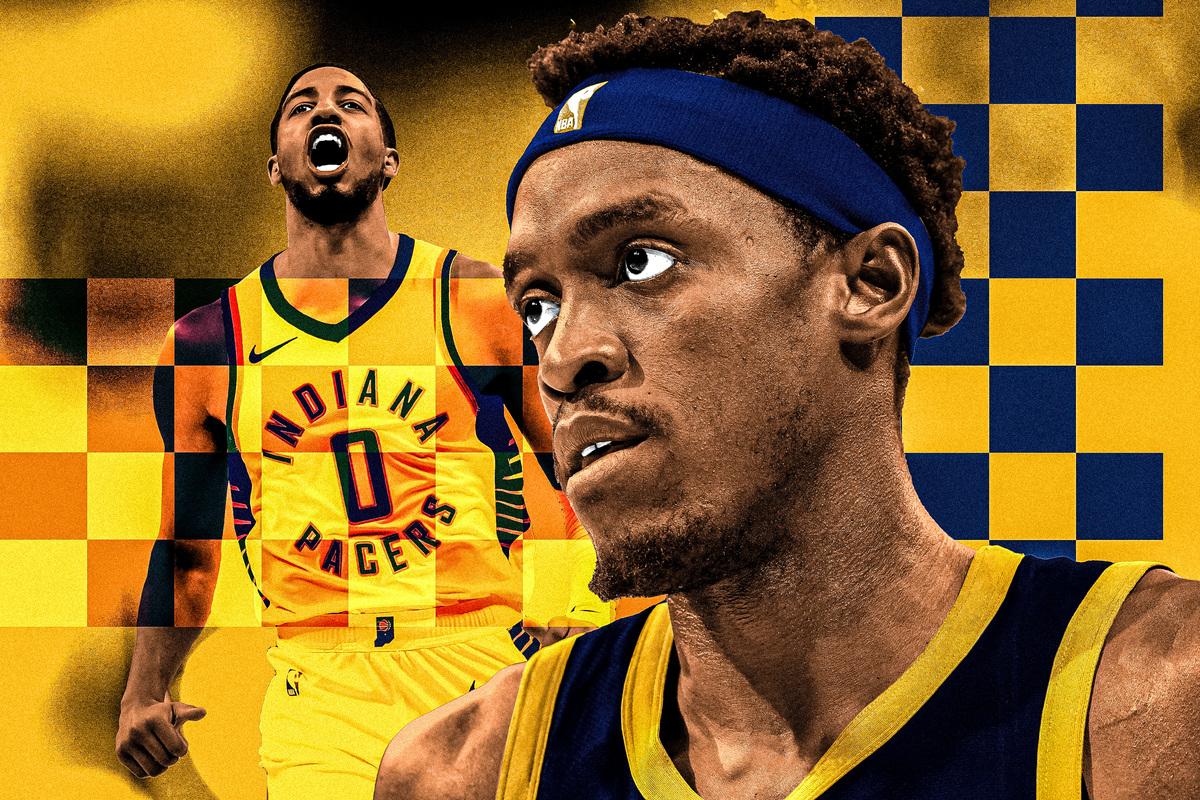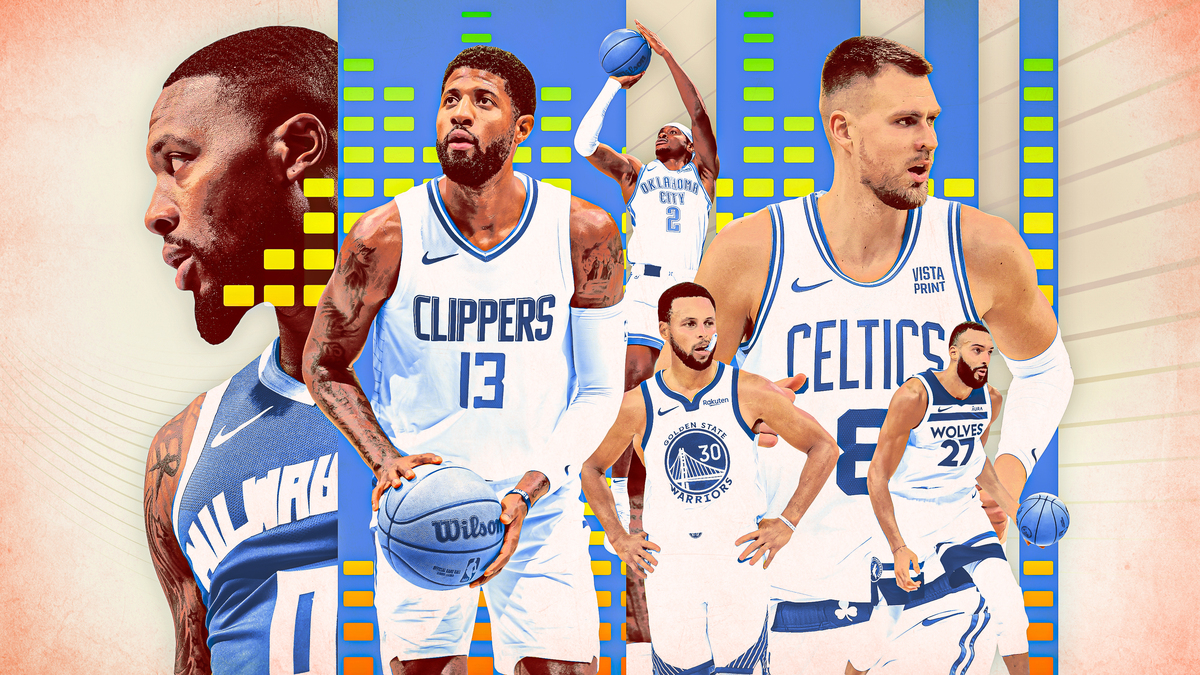
There have been days lately when I’ve found myself taking Pascal Siakam for granted. After seven and a half seasons in Toronto, his All-Star-level play became a common expectation rather than the fever dream it used to be. That’s how memory works, I guess. It can be hard to reconcile what someone used to be like. Old pictures and videos help, and yet, sometimes even tangible evidence feels unreliable amid life’s swift and changing designs. I often think about a vacation photo of me and my brother in my parents’ living room. I remember the frosted tips and the Michael Jordan comeback 45 jersey, but I swear my brother never looked like that in his life. … Right?
When the news broke—when the trade actually, finally happened: a three-team deal sending Siakam to the Indiana Pacers for Bruce Brown, Jordan Nwora, New Orleans’s Kira Lewis Jr., and three first-round picks—I went back to watch old highlights from Siakam’s rookie season. I was staring at the opposite of a phantom limb: a version of Siakam where the most distinct parts of his game hadn’t yet been built. All I saw was the scaffolding. Siakam’s transformation from a Jarred Vanderbilt–esque energy big in his first two seasons into a high-volume playmaking scorer is one of the most unlikely star turns the league has seen in the 21st century. A multiple-time All-Star. An All-NBA player. A champion—the last core player standing from the Raptors’ 2018-19 season. One of the five greatest players in franchise history. From a player development standpoint, the fostering of Pascal Siakam is arguably the biggest accomplishment of the Toronto Raptors’ three decades of existence. Now he’s a Pacer. And I couldn’t be happier for him.
Over the years, Bunyanesque legends have been built around the trade value of Raptors core members—Siakam and OG Anunoby had been fixtures on the theoretical market for what feels like a half decade, moored to the Raptors for so long because the asking price seemed borderline delusional from Masai Ujiri, who has built a legacy out of fleecing other teams. I’m sure there are plenty who delight in the relatively marginal offer that Toronto ultimately accepted for Siakam—there is no Keegan Murray, no Jalen Johnson, no Jarace Walker to be found. Indeed, the package is the package, and it’s underwhelming: a solid defender in Brown, who addresses a significant point-of-attack issue after Anunoby’s departure; a young reclamation project in Lewis, who is one of the fastest players I’ve ever seen on a basketball court; three first-rounders (including two in this upcoming draft, both likely in the early-to-mid-20s range) that allow the Raptors to remediate their depleted asset chest; and Jordan Nwora, who, um, hails from Buffalo, just 100 miles away. Ultimately, the return says more about how the Raptors have mismanaged Siakam’s contract situation over the past year than it does about his value as a basketball player.
Because he’s a very, very good basketball player. Siakam will arguably be the best free agent that will actually be available this July (though, from reports, it sounds like Siakam will be receptive to negotiating a major long-term contract with Indiana in the offseason). Since 2019-20, only Nikola Jokic, Giannis Antetokounmpo, Luka Doncic, and LeBron James have had better per-game stat lines than Siakam’s 22.8 points, 7.6 rebounds, and 4.8 assists. This year, Siakam’s usage is the lowest it’s been since the 2018-19 championship season, and that has corresponded with his highest effective field goal percentage and true shooting percentage since then, too. For a team in search of a second option who can scale up in a pinch, there aren’t many players as capable.
And now, the Pacers will get a little test drive before making a massive contract offer. Indiana has landed a rare player, in more ways than one. Siakam has no true stylistic forebear, defying one-to-one comparison—though since his breakout in 2019, he’s become a popular draft archetype all to himself. Siakam’s true signature is the way he seamlessly transitions into a post-up finish from a long-strided drive, using intricate footwork and shifts in pace and positioning to create windows of opportunity for him to get the right angle for a finish. It’s a mode of offense Siakam has smoothed out and refined for years. Yet, it’s an intrinsic style that still feels strange and unorthodox to the defense and the viewer, a break from the on-court habitus of either a true wing or a true big. It’s uncanny and, frankly, a bit weird—like if Pinocchio were stretched to 6-foot-8 and taught himself how to play like Kobe without ever knowing what he looked like, instead internalizing Mamba folklore verbally passed down to him by Geppetto.
It’s a miracle that a player with such a specific talent thrived for years in an asphyxiated Raptors offense completely lacking in perimeter spacing. But he did. Now, he joins a downright pastoral Indiana squad on pace to set a new historic standard of offensive efficiency. It’s an interesting twist of fate: There have been countless Myles Turner-to-Toronto rumors over the years, and it seemed destined that Siakam and Turner would share a frontcourt eventually—now it’s finally happening, for the other team. Playing in a true five-out floor plan alongside a legitimate stretch big will give Siakam more space to operate than in his wildest dreams. And in the interim, with Tyrese Haliburton recovering from his untimely hamstring strain, Pacers coach Rick Carlisle will have fun installing different actions with Siakam at the helm. Where Turner is strictly a “pop” in the two-man game, Siakam adds brand-new dimensions to what the Pacers can achieve in an already outstanding offense.
One of the Raptors’ pet plays in the post-Kawhi years stands out. Toronto loved running empty-side pick-and-rolls between Siakam and Fred VanVleet with the diminutive VanVleet as the screener, only for him to “ghost” the pick in favor of darting to an open space on the wing. With Siakam drawing the attention of both pick-and-roll defenders, and without any help on that side of the floor, it would net a guaranteed open look for VanVleet, every single time. Having the option of running this action with either Haliburton or Buddy Hield—two career 40 percent 3-point shooters, and probably the two best shooters Siakam has ever played with—is a gift. (For what it’s worth, Pascal himself is shooting 51.3 percent from 3 on 3.9 attempts per game over his past 10 games.)
It’s hard not to see a seamless fit for both player and team. The Raptors offense has long been fueled by transition points, and Siakam’s dual-threat ability as a finisher and on-ball initiator will only add more dimension to Indiana’s breakneck attack. He accentuates the good, but he’ll also help fix the bad. There will be stretches in the postseason when Indiana will need to capitalize on all the open space defenses leave in the midrange, and having an effective, high-volume midrange scorer like Siakam completes their offensive jigsaw. Carlisle had the pleasure of building an efficient offense on the backs of two superlative post operators in Dirk Nowitzki and Luka Doncic in Dallas; it was about time he got another crack at it in his return to Indiana.
Of course, offense hasn’t been the issue for the Pacers. Its roster—largely devoid of the kind of long, athletic big wings that widen the margins of error for a defense—simply needed Siakam more than any other team in the league. There is an unmistakable size difference between Siakam and the rest of Indiana’s wing corps. His presence alone will markedly change the way the team is able to defend. Siakam’s defense used to be the most impressive and invigorating facet of his game, and for a team with such a low bar on that side of the court, it might be once again. Pascal was never able to be everything for the Raptors, which is an impossible ask for just about anyone not named Kawhi. When you ask Siakam to play 36-plus minutes a game and be the team’s leading scorer on a nightly basis, something has to give. As with most players in his position, it’s typically his defensive intensity. But slot him on a team where his offensive workload will be more accommodating, and I’d expect his defensive activity to surge back. His body is elastic, almost boneless in his ability to move in both open space and close quarters. When locked in, he navigates screens as well as you can expect from a jumbo wing. He erases distance and slides his feet. He is a truly impactful defender when given the latitude and breathing room.
The Pacers made a bold statement of intent with this trade. There is always a risk inherent to acquiring a star entering his 30s, especially when the team’s cornerstone is nearly six years younger. But it’s a calculated high-floor, high-ceiling gamble that doesn’t require upending their core or any succession plans if things take an unfortunate turn earlier than expected. (Though I understand why they aren’t, as a Raptors fan, I am devastated that neither Jarace Walker nor Isaiah Jackson is a part of the deal.) Sitting at sixth place in the East with a 23-17 record, Indy clearly sees a way into the conference’s upper echelon, and it needed a proven star like Siakam to solidify its place. The Raptors’ downturn over the past few seasons—along with the standard northern-border amnesia that befalls most Raptors—has obscured his unwavering growth and development as a player, but on a team seemingly tailor-made to bring out the best in what he does, perhaps his plaudits are coming. Siakam has become a star in his own way, in an era of NBA basketball that celebrates the weird and unique more than any other. His waning-gibbous half-spins and leaning-tower touch finishes off the glass will always be a part of Raptors lore. But now the wide-open spaces of Indiana beckon.


